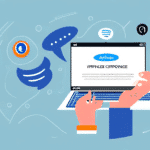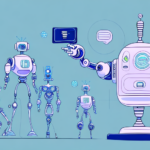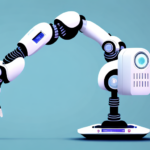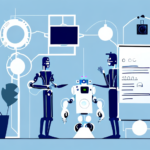How Building Chatbots Can Improve Customer Support
In today's digital era, customers expect timely and accurate responses to their inquiries. For businesses, providing efficient and effective customer support is crucial for building brand loyalty and expanding their customer base. However, handling customer queries can be time-consuming and challenging for human agents, especially when the volume of inquiries is high. This is where chatbots come into play. Chatbots are automated systems that can communicate with customers in natural language, offering instant support around the clock. In this article, we'll explore how building chatbots can enhance customer support and elevate the overall customer experience.
Understanding the Basics of Chatbots
A chatbot is an artificial intelligence system designed to converse with humans through various communication channels such as messaging apps, websites, and mobile applications. They can answer basic customer queries, provide recommendations, and even complete transactions. Chatbots are programmed using natural language processing (NLP) to understand and respond to customer inquiries in the most natural way possible. Additionally, chatbots learn from human interactions and improve their responses over time using machine learning algorithms.
Types of Chatbots
- Rule-Based Chatbots: Use predefined rules to respond to specific inputs.
- AI-Powered Chatbots: Utilize machine learning to understand and respond to a wider range of queries.
- Hybrid Chatbots: Combine rule-based and AI-powered approaches for more versatile interactions.
The Role of Chatbots in Customer Support
Chatbots play a vital role in customer support by providing quick and efficient responses to customer queries. They can handle customer inquiries 24/7, reducing the amount of time agents spend responding to repetitive questions. This allows human agents to focus on more complex issues, ultimately improving their efficiency and productivity. According to an IBM report, businesses that implement chatbots can reduce customer service costs by up to 30%.
Moreover, chatbots can collect valuable data on customer behavior and preferences, which can be used to improve products and services. By analyzing customer interactions with chatbots, businesses can identify common pain points and areas for improvement. This data can also be used to personalize customer experiences and tailor marketing efforts to specific customer segments. Overall, chatbots are a powerful tool for businesses looking to enhance customer support and gain valuable insights into their customer base.
Benefits of Building Chatbots for Customer Support
1. Increased Efficiency
Chatbots can handle a high volume of inquiries simultaneously, making it more efficient for businesses to manage customer support. This scalability ensures that customer queries are addressed promptly without overburdening human agents.
2. Cost Reduction
By automating repetitive tasks, chatbots can significantly reduce the cost of customer support. Businesses can allocate resources more effectively, focusing human agents on tasks that require critical thinking and emotional intelligence.
3. Consistent Customer Service
Chatbots provide consistent and standardized responses, ensuring that customers receive reliable information regardless of the time of day or the agent's experience level. This consistency helps maintain a high quality of customer service across all interactions.
4. Improved Customer Satisfaction
Chatbots can deliver quick and accurate responses to customer inquiries, leading to higher levels of customer satisfaction. Additionally, chatbots can offer personalized recommendations and solutions based on a customer's previous interactions, enhancing the overall customer experience.
5. Valuable Data Collection
Chatbots can gather and analyze customer data, providing businesses with insights into customer preferences, common issues, and frequently asked questions. This information can inform product development, marketing strategies, and customer service improvements.
How Chatbots Can Enhance Customer Experience
Personalized Interactions
Chatbots can provide personalized experiences by leveraging customer data to tailor interactions. For example, they can recommend products based on past purchases or browsing history, making the customer feel valued and understood.
Proactive Support
Chatbots can offer proactive support by identifying and addressing potential issues before they escalate. For instance, if a customer is experiencing difficulties on a website, a chatbot can initiate a conversation to offer assistance.
24/7 Availability
Unlike human agents, chatbots can operate around the clock, providing assistance to customers at any time of the day or night. This is particularly beneficial for businesses with a global customer base spanning different time zones.
Cost Savings
By automating routine tasks and providing self-service options, chatbots can reduce the need for a large customer support team. This not only lowers operational costs but also allows businesses to allocate resources more strategically.
Building a Customized Chatbot for Your Business Needs
Creating a customized chatbot requires a strategic approach tailored to your business objectives and customer requirements. Here are the key steps to building an effective chatbot:
1. Define Objectives
Identify the specific problems you want the chatbot to solve, such as reducing response times, handling FAQs, or facilitating transactions. Clear objectives guide the chatbot's functionality and design.
2. Understand Your Audience
Analyze your target audience's preferences and communication channels. Understanding how your customers interact with your business helps in designing a chatbot that meets their needs effectively.
3. Choose the Right Platform
Select a chatbot development platform that supports the creation of customized chatbots and offers seamless integration with your existing systems and applications. Popular platforms include Dialogflow, Botpress, and IBM Watson.
Common Challenges in Building Chatbots and How to Address Them
1. Defining the Right Persona
Creating a chatbot with an appropriate persona is essential for effective communication. The chatbot's tone and style should align with your brand's voice. Conducting thorough persona development can help in designing interactions that resonate with customers.
2. Training the Chatbot
Training the chatbot to accurately understand and respond to various queries requires a substantial amount of quality data. Ensuring that the chatbot is well-trained with diverse inputs enhances its ability to handle different customer interactions.
3. Integration with Existing Systems
Ensuring that the chatbot seamlessly integrates with your existing CRM, databases, and other systems is crucial for providing comprehensive support. Proper integration enables the chatbot to access and utilize necessary information to assist customers effectively.
4. Handling Complex Queries
While chatbots are excellent for handling routine inquiries, they may struggle with complex or nuanced questions. Implementing a seamless handoff mechanism to human agents when necessary ensures that customers receive the support they need without frustration.
Measuring the Success of Your Chatbot in Improving Customer Support
To evaluate the effectiveness of your chatbot, track key performance metrics that reflect customer support performance. Important metrics include:
- Customer Satisfaction (CSAT): Measures how satisfied customers are with their interactions.
- Average Handling Time (AHT): The average time taken to resolve a customer query.
- First Response Time: The time taken for the chatbot to respond to a customer's initial query.
- Resolution Rate: The percentage of queries successfully resolved by the chatbot.
- Customer Retention Rate: Tracks the ability of the chatbot to retain customers over time.
Regularly analyzing these metrics helps identify areas for improvement and refine the chatbot's performance to better serve customers.
Integrating Human Agents with Chatbots for Optimal Results
Combining the strengths of chatbots and human agents leads to a more robust customer support system. While chatbots can efficiently handle routine queries, human agents are essential for addressing complex issues that require empathy and critical thinking. Implementing a hybrid support model ensures that customers receive comprehensive assistance tailored to their specific needs.
Future of Customer Support with AI-Powered Chatbots
The future of customer support lies in the continued advancement of AI-powered chatbots. Emerging technologies in natural language processing, machine learning, and cognitive computing are making chatbots more intelligent and responsive. Future chatbots will be capable of understanding context, detecting emotions, and providing even more personalized and effective support, further transforming the customer service landscape.
Case Studies: Successful Implementation of Chatbots in Customer Support
Several businesses have successfully integrated chatbots into their customer support operations, yielding impressive results:
- H&M: Implemented a chatbot to assist customers with outfit choices, resulting in a 70% increase in website traffic and a 60% higher revenue.
- Pizza Hut: Adopted a conversational chatbot on its website, leading to a 4x increase in conversion rates.
- Sephora: Utilized chatbots to offer personalized beauty advice, enhancing customer engagement and satisfaction.
These case studies demonstrate the effectiveness of chatbots in enhancing customer experience and driving business growth.
Top Tools and Platforms for Building Effective Chatbots
There are numerous tools and platforms available for building effective chatbots, each offering unique features and capabilities:
- Dialogflow: Offers natural language understanding and integration with various platforms.
- Botpress: An open-source platform that allows for extensive customization and control.
- IBM Watson: Provides advanced AI capabilities and robust integrations.
- Microsoft Bot Framework: Enables the creation of sophisticated chatbots with comprehensive tools.
Choosing the right platform depends on your specific business needs, technical expertise, and desired chatbot capabilities.
Best Practices for Developing Conversational Interfaces in Chatbots
- Mimic Human Conversation: Design chatbots to use natural language, personalized responses, and appropriate follow-ups to create a conversational flow that feels intuitive and engaging.
- Extensive Testing: Regularly test the chatbot to ensure it responds accurately to various queries and scenarios. User testing and feedback are crucial for identifying and resolving issues.
- Iterative Development: Continuously improve the chatbot based on user feedback and performance metrics. An iterative approach allows for adaptive enhancements that meet evolving customer needs.
- Clear Escalation Paths: Ensure that there are clear mechanisms for escalating complex queries to human agents when necessary, maintaining a seamless customer support experience.
Building Trust with Customers through Personalized Conversations with Chatbots
Establishing trust with customers through chatbots involves creating personalized and transparent interactions. Here’s how to achieve this:
- Personalized Responses: Utilize customer data to tailor responses and recommendations, making interactions more relevant and valuable.
- Transparency: Clearly communicate that the customer is interacting with a chatbot and explain its capabilities. Honesty fosters trust and sets appropriate customer expectations.
- Data Privacy: Ensure that customer data is handled securely and responsibly, adhering to relevant data protection regulations.
- Consistent Performance: Maintain high standards in response accuracy and reliability to build confidence in the chatbot’s effectiveness.
By focusing on personalization and transparency, businesses can build strong, trust-based relationships with their customers through chatbot interactions.
Conclusion
Chatbots are revolutionizing the customer support landscape, offering businesses a range of benefits that drive customer satisfaction, loyalty, and growth. Building effective chatbots requires a strategic approach that aligns with your business objectives and customer needs. By adhering to best practices, leveraging the right tools and platforms, and continuously refining chatbot performance through data-driven insights, businesses can create chatbots that deliver exceptional customer experiences. As AI technology continues to advance, chatbots will play an increasingly significant role in shaping the future of customer support in an ever-evolving digital world.




















